A Segment is More Attractive if It is Easy for New Competitors to Enter the Market
4. Develop market segmentation strategy
Select your target segment and identify the implications of this segment or persona. Make moves based on a target segment, project goals, market viability, and product status. Use powerpoint templates to capture and present your marketing segmentation strategy effectively.
5. Identify launch plan
Identify key stakeholders, ideate and communicate the launch plan internally, then execute the project using your target segments.

What Are the Five Types of Market Segmentation?
The five types of market segmentation include:
- Behavioral Segmentation
- Psychographic Segmentation
- Demographic Segmentation
- Geographic Segmentation
- Firmographic Segmentation
Watch: How to Use Behavioral & Narrative Economics (Webinar)
Behavioral Segmentation: A Customer's Choices
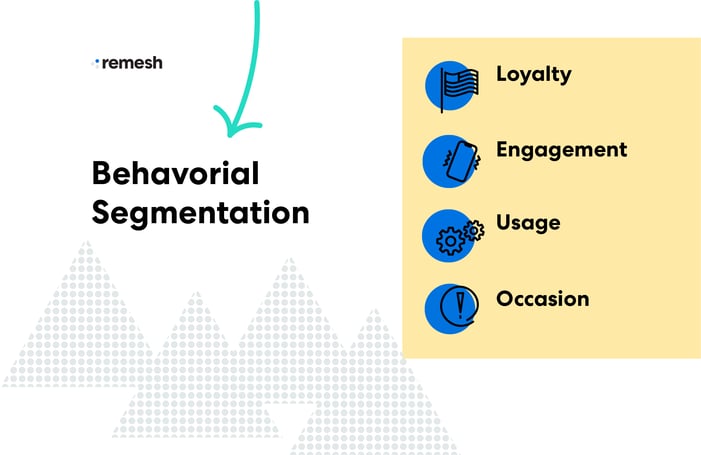
Behavioral segmentation digs deeper into customers' purchasing habits than demographic segmentation. It's also one of the most popular customer profile types to be integrated into marketing campaigns. Behavioral segmentation comprises behavior patterns, like customer loyalty or engagement level, specific to customer interactions with a brand or company.
Behavioral Segmentation Examples
- Benefit(s) sought from product or service
- Readiness to buy or purchase
- Usage-based segmentation
- Common characteristics
You can use behavioral segmentation to gain insights into customer experience, allowing for improvements in customer success. Some questions to consider:
- How engaged are shoppers throughout the customer journey?
- What specific trends in timing or occasion do your customers tend to prefer your products?
- How much time are your customers spending in the buyer's process?
- How does your business define a "good customer?"
Behavioral segmentation is also used for marketers to determine future customer leads and prospects in the market who are more likely to purchase your product.
Similar to psychographics, behavioral segments are primarily collected based on a consumer's digital footprint. New improvements in technology compile metadata from customers to better understand their preferences. Unused data can be sent to customer support or used for marketing messages.

Psychographic Segmentation: A Customer's Lifestyle

Psychographics is a type of customer segmentation that focuses on inner or qualitative traits. Psychographic attributes are the ones that aren't obvious just by looking at your customer, like demographic segmentation. Instead, psychographics requires deeper analysis.
Psychographic Segmentation Examples
- Habits
- Hobbies, activities, or interests
- Values or opinions
- Personality or attitude
- Lifestyle
- Social status
By defining a customer persona this way, you'll be more equipped to tailor your marketing strategies. And, you'll appeal to customer tastes.
Defining Brand Personality Traits Through Psychographic Segmentation
You can use psychographic segmentation to develop a "brand personality" or brand personification. In other words, the personality traits that your brand exemplifies.
For example, let's say your insights team discovers your customer base purchases a new type of running shoe every year. Your market research team also knows that people interested in new running shoes value high energy and independence.
Read: The Impact of COVID-19 on Digital Ads (Report)
Then, you can use that finding as a feature in your brand style, which could help sell other products related to fitness under those same traits. For example, your commercials might be fast-paced and emphasize the strength of the individual.
There are a few ways to collect demographics, including:

1. Interviewing existing clients
Depending on your relationship with a customer, you can more or less ask them directly about their consumer habits. Some quantitative feedback questions may include:
- How likely are you to purchase Company X's sneaker again?
- If you like Sneaker X, would you try Hoodie Y from the same company?
If you're running out of ideas, you might start looking into some unusual places to collect customer feedback. Or, you might begin by investigating potential groups of customers you're not currently interviewing or more broadly into consumer trends.
When you ask qualitative questions, you can discover meaningful insights about your customers. These questions may include:
- What do you enjoy about running?
- Can you walk me through your running routine?
These questions lead to further insights into a customer's lifestyle. These questions, especially when asked to larger groups of people, are typically requested by creating a survey. However, online focus groups are becoming increasingly popular customer feedback tools, as well.
Read: Online Focus Groups vs Traditional Focus Groups

2. Observing customer data
This type of psychographic probe is more low-key and becoming increasingly efficient with A.I. advancement. For companies studying consumers, A.I. systems have allowed for a deeper understanding of consumer insights.
Some questions to consider:
- Where are your consumers on the internet?
- How can you use their Instagram or Pinterest clicks to better market your products?
- What niche marketing strategies can you tap into?
Analyzing your customer's social media and digital habits will enable you to optimize your product marketing efforts – and probably contribute to your market segmentation strategy, as well. An increasingly popular example of this play method is coming with the rise of voice technology.
Voice search is an essential asset in psychographic segmentation. Customers use devices like Google Home or Amazon's Alexa to discuss personal preferences, interests, and other potentially sensitive data. Now, consumer data is available for companies to sculpt customer profiles.
With this access to detailed customer information comes some concerns over data privacy and ethical corporate use. Some risks can include:
- Data exploitation
- Identity tracking
- Voice and facial recognition
Without consent and transparency, this data could easily make consumers less inclined to share their information with brands, which in turn, makes it harder to generate brand loyalty. If used responsibly, these technologies can create a fully tailored consumer marketplace, speed up efficiency, and increase time to market.
Demographic Segmentation: A Customer's Profile
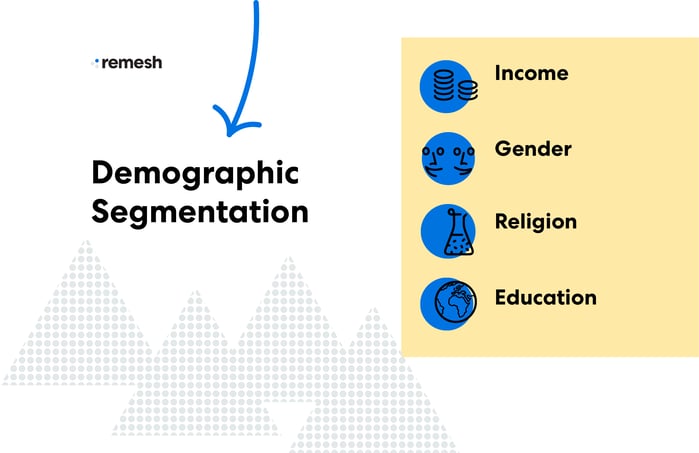
Demographics are the breakdown of your customer personas in the market for cursory traits like age or gender. These traits offer basic information on your customers and are often considered one of the more broad segmentation types. Examples of demographic segmentation include age, income, family size, education, or gender.
Dive into these segments to cut down on time and resources to understand your target audience. Or tap into potential consumers that you have yet to reach. Demographics are generally less invasive to collect than other segmentation types.
Demographic Segmentation Examples
- Occupation
- Marital status
- Political party status
- Race
- Religion
- Living status (if your subject is a homeowner or renter)

Geographic Segmentation: A Customer's Home
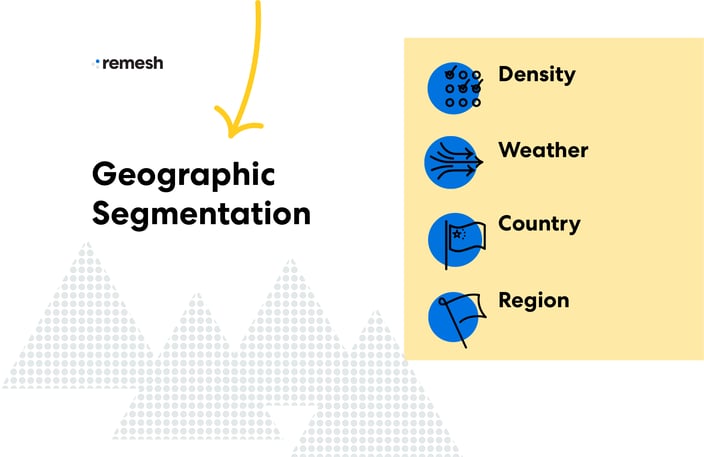
Geographics are the study of your customer based on their physical location, which can affect more physical interactions in the market. Consumers grouped in similar areas may share similar preferences. That's why this type of market segmentation is excellent to pair alongside more abstract types, like behavioral.
Geographic Segmentation Examples
- City
- State
- Country
- Population density
- Economic status
- Zip Code
- Regional climate
However, geographic segmentation can also include geographic regions that aren't technically defined, such as neighborhoods.
For example, consider a company that is advertising a lawn care service that utilizes a subscription model. The company would likely be more successful in targeting a suburban area where residents need extra yard care. The campaign would be less successful in an urban area, where consumers might be more interested in a food delivery service.
Read: How to Write Discussion Guides (eBook)
Studying customer geography can also help target search results in your prospect's region.

Firmographic Segmentation: The Customer's Company
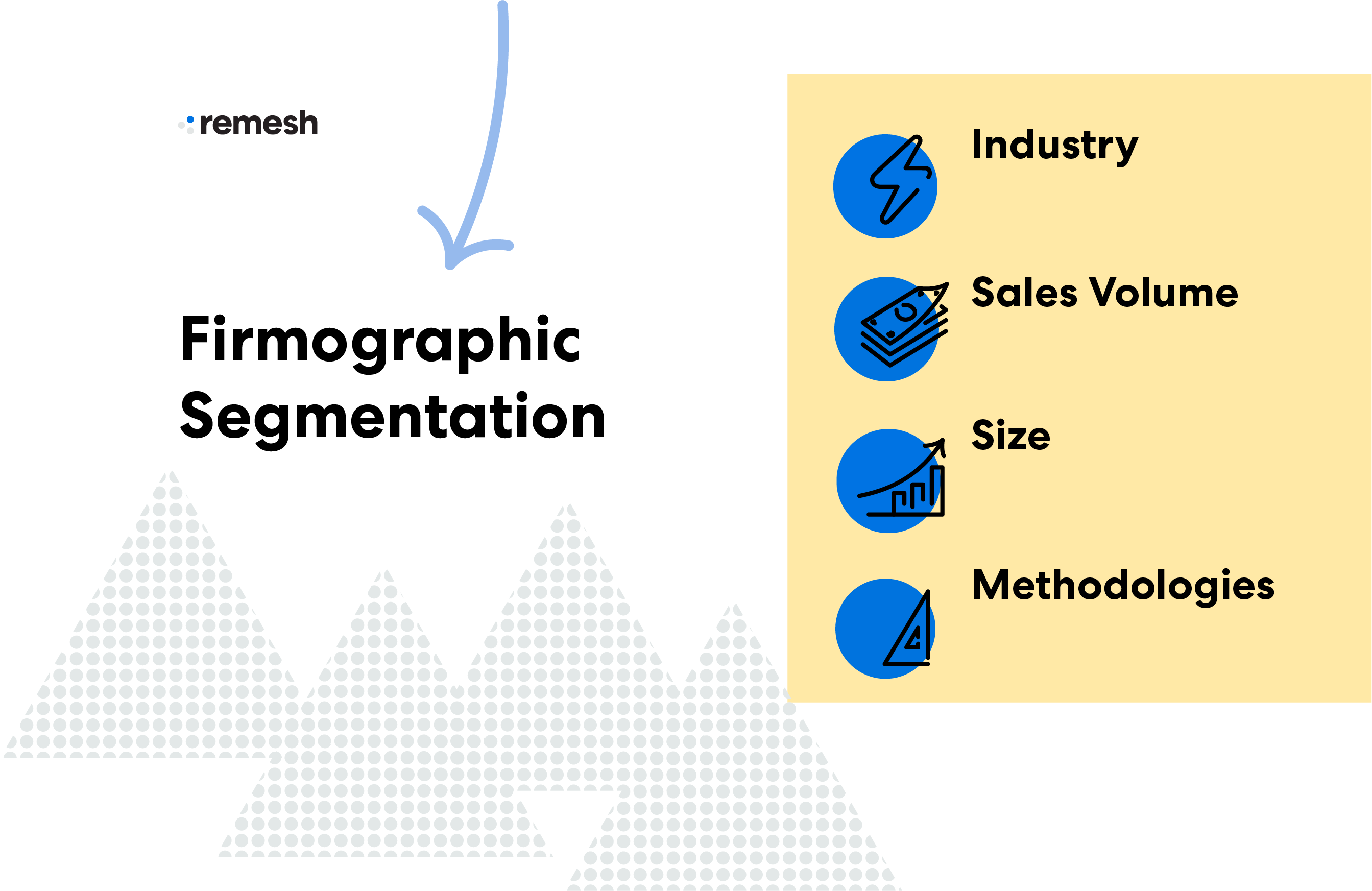
You can use firmographics to describe the attributes of firms or businesses. Firmographics are to firms and investors as demographics are to people. Companies can use this type of segmentation to determine whether or not a smaller firm is apt for an investment.
With millions of firms worldwide, businesses can use firmographics to identify prospects based on size, scale, and funding. You can also breakdown firms into sections of:
- Non-profits
- Businesses
- Governmental entities
- Agencies
- Small-retail shops
- Independent contractors
Investing in a smaller firm or company always comes with a risk. Therefore, investors have to be precise in segmenting venture opportunities to minimize that risk.
Segmentation variables for firms typically include things related to a smaller company's potential. For example, before investing in a new application, venture capital firms look for company strengths. These can include things like the vision of the executive team or the product's target market.
Firmographic Segmentation Examples
- Performance and annual revenue
- Average sales cycle
- Size and employee population
- Ownership (public, private, government, etc.)
- Organizational trends
Read: The Ultimate Guide to Conducting Online Qualitative Research

Common Segmentation Mistakes to Avoid
Once you've created segments, keep an eye out for common mistakes that marketers and researchers make.

Making your segments too small or specialized
Segments that are too small will be more challenging to organize or inaccurate, and they can distract from your objective. Like sample size, an over-segmented group can yield data that is not statistically or directionally significant.

Not allowing your segments to change
Stay focused on ROI. If your strategy isn't working efficiently for your business, it may be time to switch things around.
Ignoring new potential personas
Customer profiles change. Try not to get too attached to your segments, as they will evolve with the market.

Types of Marketing Segmentation Strategies
Targeting and Positioning
Targeting and positioning are the next steps in the roadmap following market segmentation. To evaluate the potential commercial value of a segment, use these strategies to assess the following criteria:
- Market Size. The market share for that segment must be large enough to justify spend.
- Segment Differences. What's different about each segment, and what is the value of those differences? Is one segment distinct from the others?
- Profit vs. Spend. The segment must provide returns on investment from the initial budget allocated for a campaign or project.
- Accessibility of Segment: Is the segment available to your team? If not, how can your brand overcome the barriers to that segment?
After settling on a target segment, move on to product positioning, which presents the benefits of your product to the chosen target segment. A simple way to evaluate your best positioning opportunities is to map them out.
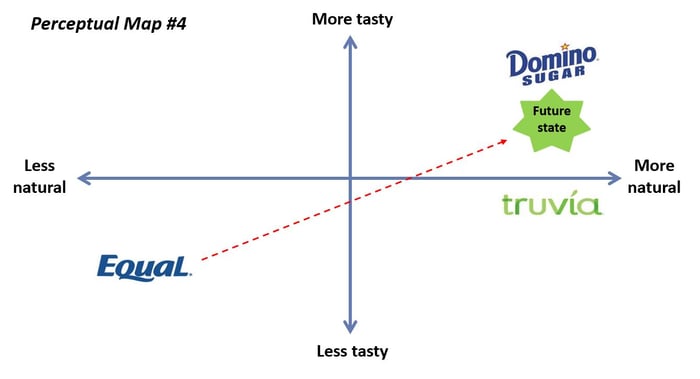
Follow these steps to create a simple product positioning map:
- Define "hot buttons" or customer feedback trends about your product through surveys or focus groups
- Ask your customers to rate competitor products based on that given feedback criteria
- Place your product and competitor products on a scatter plot and evaluate the gaps

Summing Up Market Segmentation
Whether it's conducting an interview or writing a survey, the next phase of your research can sometimes be unclear.
When collecting massive amounts of market segmentation data, keep the more extraordinary brand or marketing in mind. Rather than relying on one or two sole strategies to characterize your customer segments, combine the efforts of multiple strategies. For researchers, this allows for a complete perspective on target customers.
Marketing segmentation allows companies to define and optimize future products and advertise their product to consumers in the future.
Don't leave your market segmentation up to a manual process. Optimize your customer insights with AI, using our free guide below.

Source: https://blog.remesh.ai/5-types-of-market-segmentation-how-to-use-them
0 Response to "A Segment is More Attractive if It is Easy for New Competitors to Enter the Market"
Post a Comment